As someone who follows a gluten-free diet, it can be challenging to find foods that are safe to eat. Grits, a popular Southern breakfast food, are made from ground corn, which is naturally gluten-free.
However, the question remains: are Quaker grits gluten-free? The answer is not straightforward, as it depends on the brand and type of grits you buy.
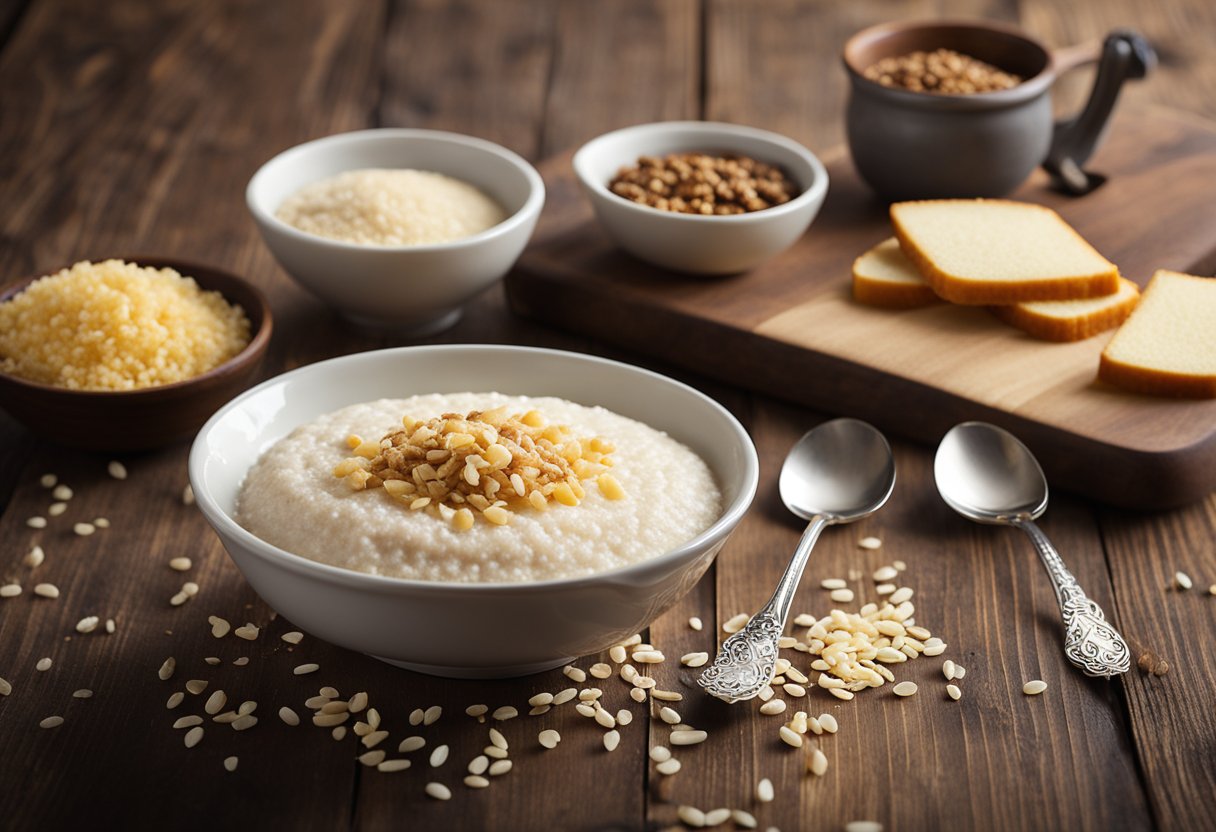
To fully understand whether Quaker grits are gluten-free, it’s essential to have a basic understanding of what grits are and how they’re made. Grits are a type of porridge made from ground corn kernels.
Traditionally, grits are made by soaking whole corn kernels in an alkaline solution to remove the hulls and germ, then grinding the remaining endosperm into a coarse meal. This meal is then boiled with water or milk until it forms a thick, creamy porridge.
Quaker is a well-known brand that produces several types of grits, including instant and traditional varieties.
While Quaker grits are made from corn, they may not be gluten-free due to the risk of cross-contamination during processing and packaging. It’s essential to read the label carefully and look for products that are certified gluten-free to ensure that they’re safe to eat.
Key Takeaways
- Grits are made from ground corn and are naturally gluten-free.
- Quaker produces several types of grits, but they may not be gluten-free due to the risk of cross-contamination during processing and packaging.
- To ensure that your grits are safe to eat, look for products that are certified gluten-free.
Understanding Grits
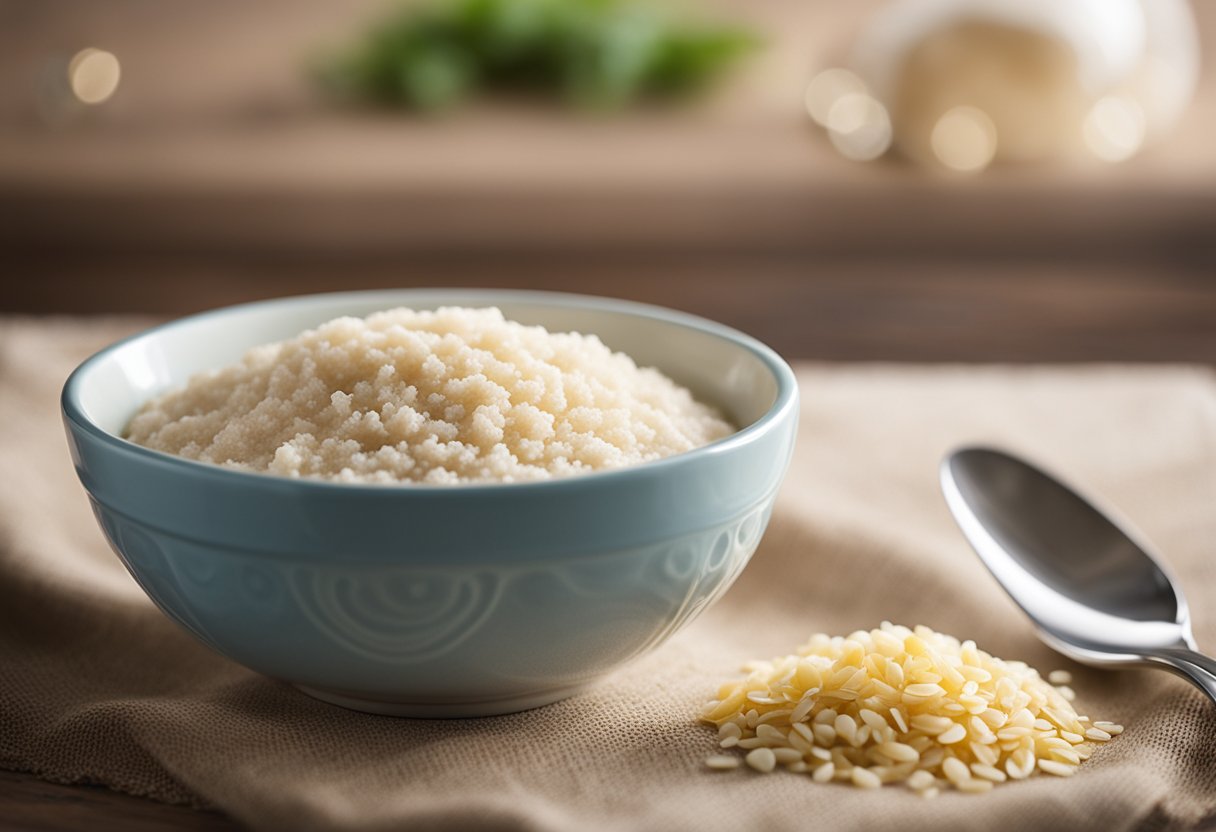
As someone who has followed a gluten-free diet for years, I know how important it is to understand which foods contain gluten and which do not.
One food that often confuses people is grits. So, are Quaker Grits gluten-free? Let’s dive into the world of grits and find out.
Grits are a popular Southern dish made from ground corn. They are similar to porridge or oatmeal and can be served sweet or savory.
Traditional grits are made from white hominy grits or yellow corn grits, both of which are naturally gluten-free. However, some brands of grits may contain gluten due to cross-contamination during processing.
Hominy is a type of corn that has been treated with an alkali solution, such as lime or lye, to remove the hull and germ.
This process makes the corn easier to digest and gives it a unique flavor and texture. White hominy grits are made from hominy that has been ground into a coarse meal, while yellow corn grits are made from dried and ground yellow corn.
When shopping for grits, it’s important to check the label to ensure that they are gluten-free. Some brands, like Quaker Grits, are not considered gluten-free due to the risk of cross-contamination during processing.
If you have celiac disease or a gluten sensitivity, it’s best to choose a brand that is certified gluten-free or labeled as such.
In summary, grits can be a delicious and nutritious addition to a gluten-free diet. Just be sure to choose a brand that is labeled as gluten-free or certified as such to avoid the risk of cross-contamination.
Quaker and Its Brands
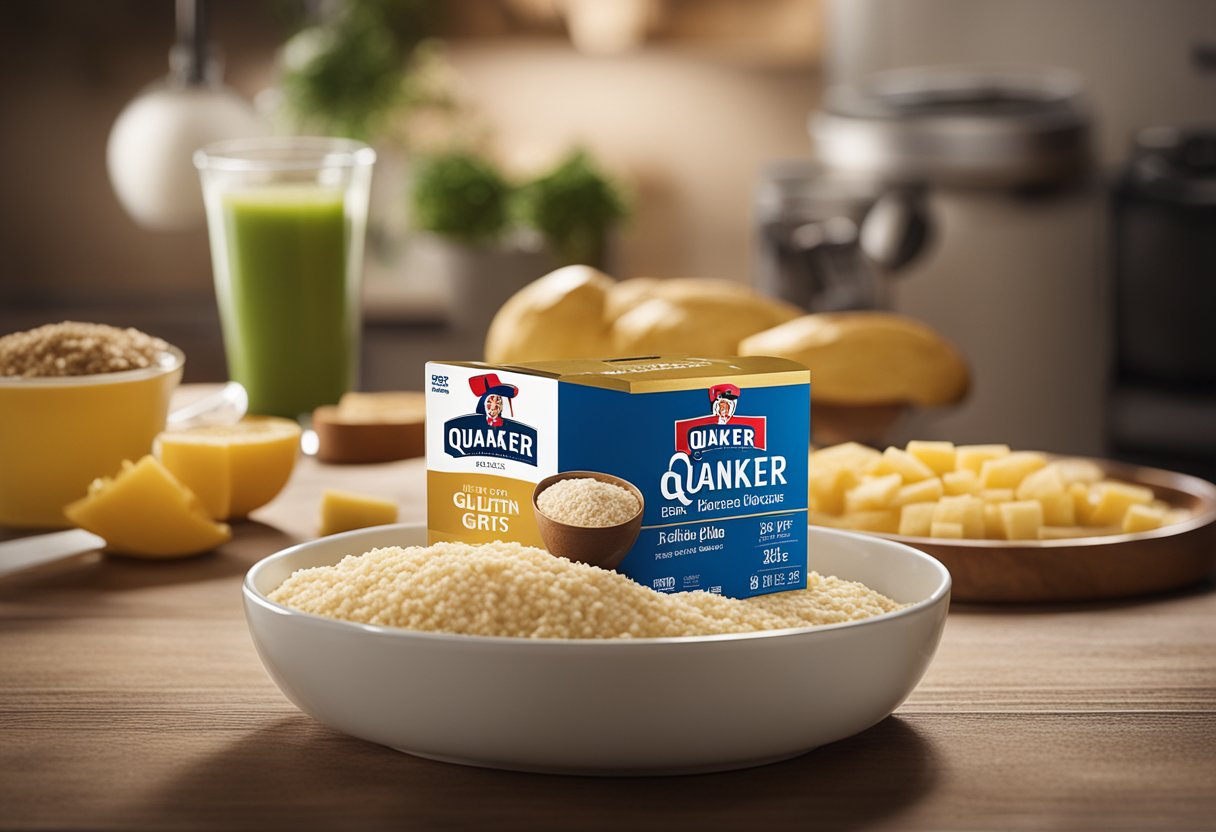
Quaker Oats is a brand of breakfast cereals and other food products. The company is owned by PepsiCo, which acquired Quaker Oats in 2001.
Quaker Oats is known for its oatmeal products, including instant oatmeal and old-fashioned oats, but they also produce grits.
Quaker Oats has a gluten-free line of products, which includes gluten-free instant oatmeal and gluten-free quick 1-minute oats. These products are labeled as gluten-free on the packaging and meet the legal standard for gluten-free labeling.
The Quaker Oats Center of Excellence is a research and development facility that focuses on developing new products and improving existing products.
The center has a newsletter that provides information on the latest research and development in the field of nutrition and health.
PepsiCo Tasty Rewards is a program that offers discounts and coupons on PepsiCo products, including Quaker Oats products. The program is free to join and offers members access to exclusive recipes and special offers.
In conclusion, Quaker Oats offers a line of gluten-free products, including gluten-free instant oatmeal and gluten-free quick 1-minute oats.
The Quaker Oats Center of Excellence is a research and development facility that focuses on developing new products and improving existing products. PepsiCo Tasty Rewards is a program that offers discounts and coupons on PepsiCo products, including Quaker Oats products.
Quaker Grits and Ingredients
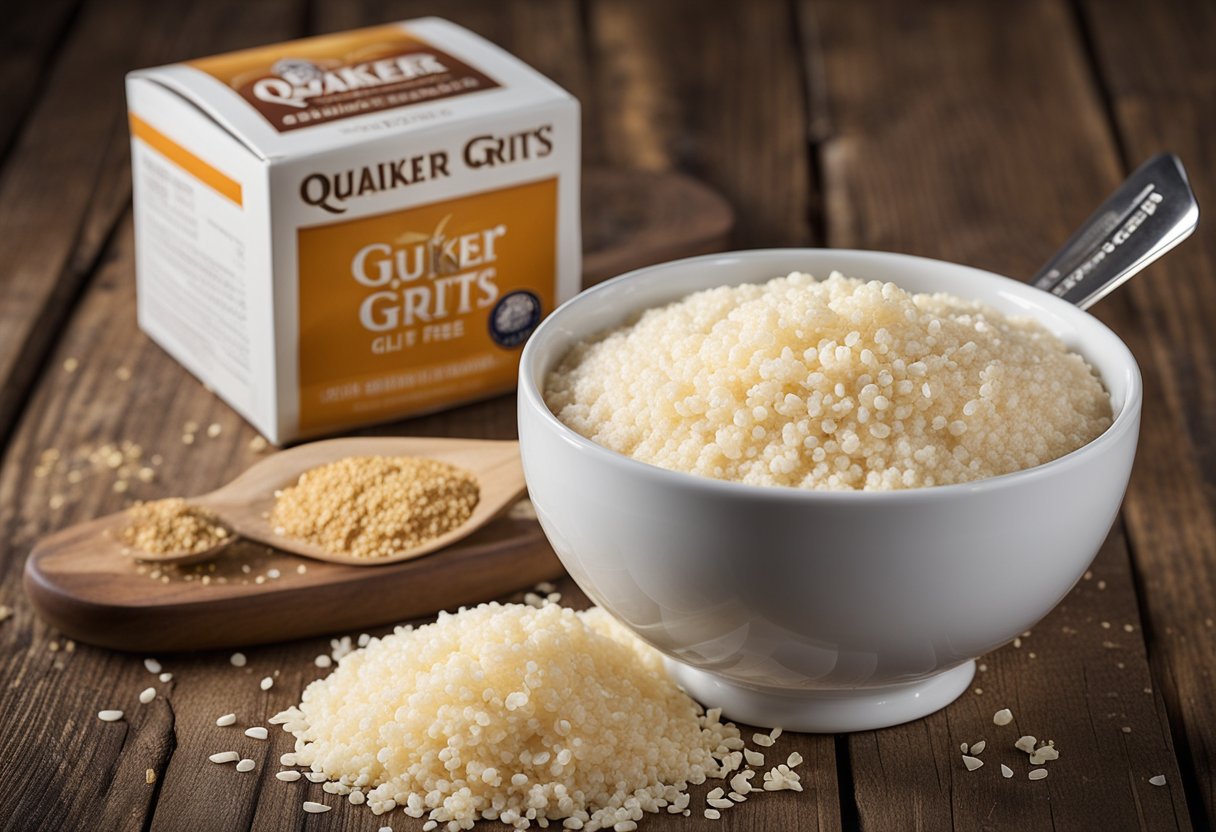
I did some research to find out if Quaker Grits are gluten-free. Quaker is a well-known brand that has been producing grits for over 100 years. According to their website, Quaker Grits are made from white corn grits, water, and salt.
White corn is a naturally gluten-free food, which means that the grits themselves are gluten-free. However, it’s important to note that Quaker stores their corn with gluten grains like wheat, rye, and barley.
Because the corn and gluten grains are stored together, there’s too much cross-contamination for any of their grits to be considered gluten-free.
In addition to white corn grits, Quaker also produces grits made from oats. While oats are naturally gluten-free, they are often processed in facilities that also process wheat, barley, and rye.
This means that oats can be contaminated with gluten, making them unsafe for people with celiac disease or gluten intolerance.
Overall, it’s important to read labels carefully and to be aware of potential cross-contamination when buying Quaker Grits or any other food product.
If you have celiac disease or gluten intolerance, it’s best to look for grits that are certified gluten-free or that are produced in gluten-free facilities.
In conclusion, Quaker Grits are made from white corn grits, water, and salt, which are all gluten-free ingredients.
However, due to potential cross-contamination, none of their grits are considered gluten-free. If you’re looking for gluten-free grits, it’s best to look for certified gluten-free products or those produced in gluten-free facilities.
Gluten and Its Sources
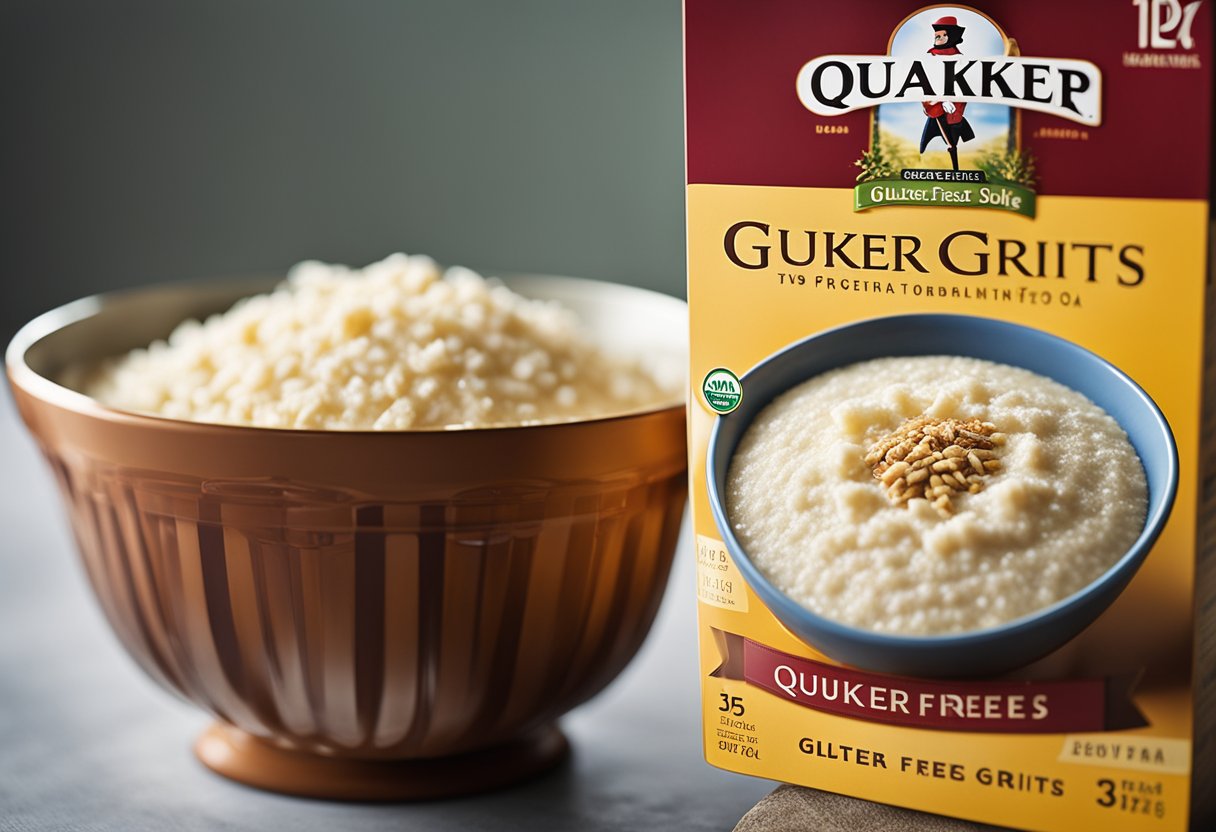
As someone who is gluten intolerant, it’s important to understand what gluten is and where it can be found.
Gluten is a protein found in grains such as wheat, barley, and rye. It’s what gives bread its chewy texture and is often used as a thickening agent in sauces and soups.
When it comes to packaged foods, it’s crucial to read the ingredient list to determine if it contains gluten. Some common sources of gluten include:
- Wheat flour
- Barley malt
- Rye flour
- Brewer’s yeast
- Semolina
It’s important to note that just because a product doesn’t contain wheat, barley, or rye in the ingredient list, it doesn’t necessarily mean it’s gluten-free. Some products may contain hidden sources of gluten, such as modified food starch or maltodextrin.
When it comes to Quaker Instant Grits, it’s important to check the ingredient list to ensure that it doesn’t contain any sources of gluten.
According to a post on the Celiac.com forums, Quaker Instant Grits caused pain and bloating for someone who is gluten intolerant.
However, other brands such as Arrowhead Mills Grits are labeled as gluten-free and are safe for those with gluten intolerance to consume.
Overall, it’s important to be diligent in checking ingredient lists and understanding where gluten can be found in order to maintain a safe and healthy diet.
Gluten-Free Diet and Celiac Disease
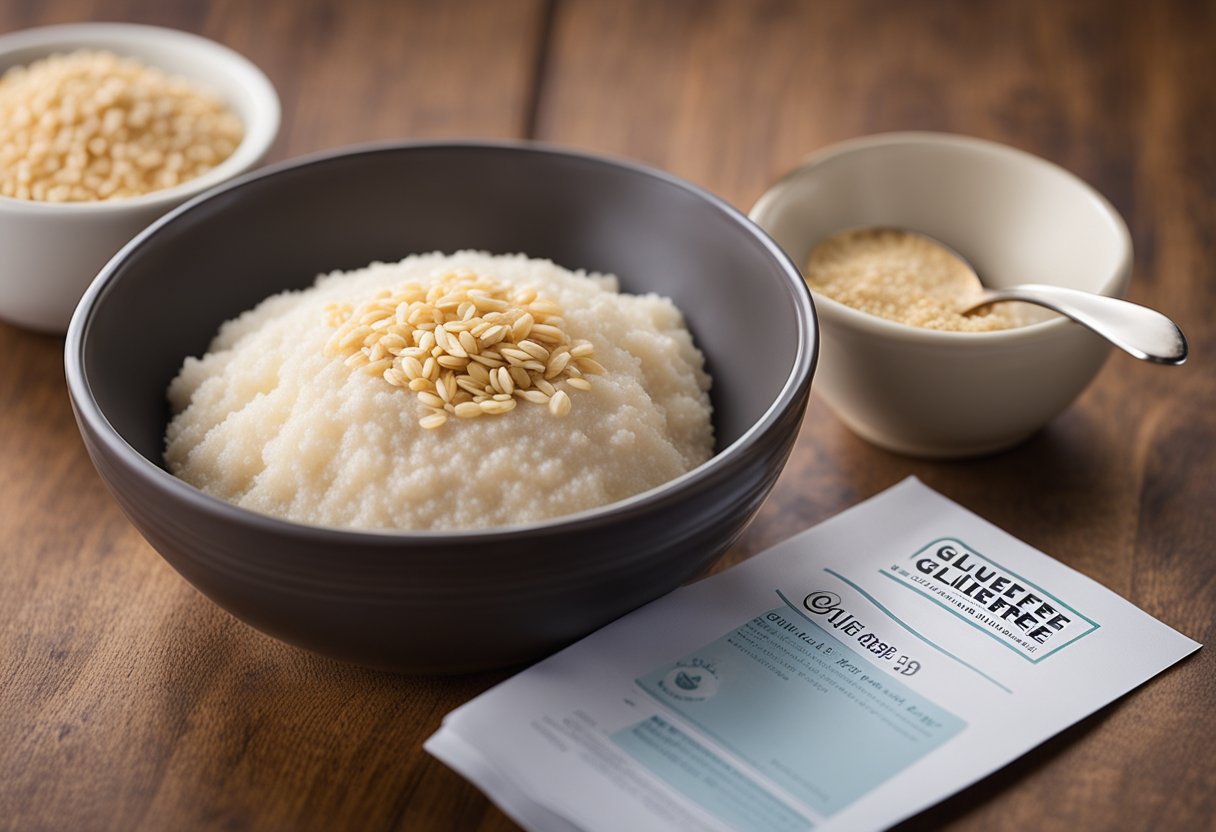
As someone who follows a gluten-free diet due to celiac disease or gluten intolerance, it’s important to know which foods are safe to eat.
Grits, in their pure form, are made from corn and are naturally gluten-free. However, it’s crucial to check the brand of grits to ensure that they are made in a gluten-free facility and are not at risk of cross-contamination.
Celiac disease is an autoimmune disorder that affects the small intestine when gluten is consumed. Gluten is a protein found in wheat, barley, and rye, and can cause severe damage to the small intestine in those with celiac disease.
A gluten-free diet is the only treatment for celiac disease, and it involves avoiding all foods that contain gluten.
For those with gluten intolerance or sensitivity, consuming gluten can cause uncomfortable symptoms such as bloating, gas, and diarrhea. A gluten-free diet can help alleviate these symptoms and improve overall health.
It’s essential to be cautious when consuming processed foods, as many contain hidden sources of gluten. Always read labels carefully and look for products that are labeled as gluten-free.
Additionally, look for products that are certified gluten-free by third-party organizations, as they have undergone rigorous testing to ensure that they are safe for those with celiac disease or gluten intolerance.
In summary, grits can be a safe and delicious addition to a gluten-free diet, as long as they are made in a gluten-free facility and are not at risk of cross-contamination. As with all foods, it’s important to read labels carefully and be aware of hidden sources of gluten.
Are Quaker Grits Gluten-Free?
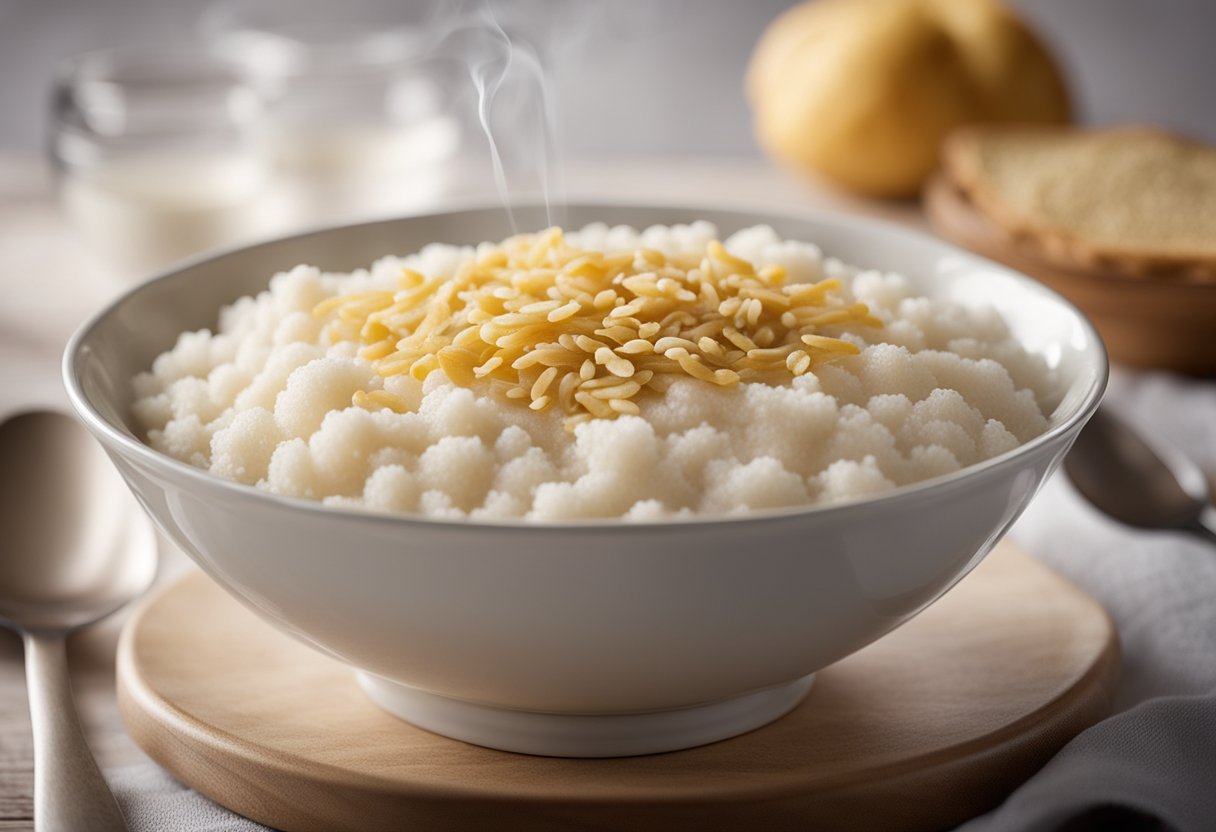
As someone who follows a gluten-free diet, I know how important it is to be cautious when it comes to choosing foods. If you’re wondering whether Quaker grits are gluten-free, the answer is not straightforward.
While grits themselves are naturally gluten-free, there is a possibility of cross-contamination during processing and packaging.
According to Celiac.com, Quaker has stated that they cannot guarantee that their instant grits are gluten-free due to cross-contamination during shipping.
However, there are other sources that suggest Quaker grits are safe for those following a gluten-free diet. Meaningful Eats lists Quaker grits as a gluten-free option, while Verywell Fit notes that grits are made from corn and can be a nutritious gluten-free grain option.
It’s important to note that even if a product is labeled as gluten-free, it may still contain trace amounts of gluten. This is why it’s always a good idea to read ingredient labels carefully and contact the manufacturer if you have any concerns.
In summary, while Quaker grits may not be guaranteed gluten-free due to the possibility of cross-contamination, they are still considered a safe option by some sources.
As always, it’s important to exercise caution and do your own research before consuming any food product.
Cross-Contamination Risks
As someone who follows a gluten-free diet, it’s important to be aware of the risks of cross-contamination when consuming products like Quaker grits.
Cross-contamination can occur when gluten-containing products come into contact with gluten-free products during manufacturing, processing, or packaging. This can happen through shared equipment, facilities, machinery, or even plants.
When it comes to Quaker grits, the company does not label their grits as gluten-free. This means that there is a risk of cross-contamination during the manufacturing process.
However, Quaker does state that they follow Good Manufacturing Practices (GMPs) to minimize the risk of cross-contamination.
It’s important to note that even if a product is labeled as gluten-free, there is still a risk of cross-contamination.
According to a study published by the National Center for Biotechnology Information, most patients with celiac disease can safely tolerate a daily cross-contamination of approximately 10 mg gluten, or 500 g of food containing 20 mg/kg of gluten.
However, there is a tremendous degree of variability within this population, and some patients may have worsening histological changes with very low daily gluten exposure.
To minimize the risk of cross-contamination, it’s recommended to buy grains that are certified gluten-free to ensure that cross-contamination didn’t take place during processing in the factory.
It’s also recommended to buy a separate toaster or use toaster bags, which are readily available at supermarkets. Additionally, buying separate jars of condiments or using squeeze bottles and labeling them can help prevent cross-contamination.
In summary, while Quaker grits are not labeled as gluten-free, the company follows GMPs to minimize the risk of cross-contamination.
However, there is still a risk of cross-contamination, and it’s important to take precautions to minimize this risk when consuming Quaker grits or any other product.
Instant Grits Vs. Traditional Grits
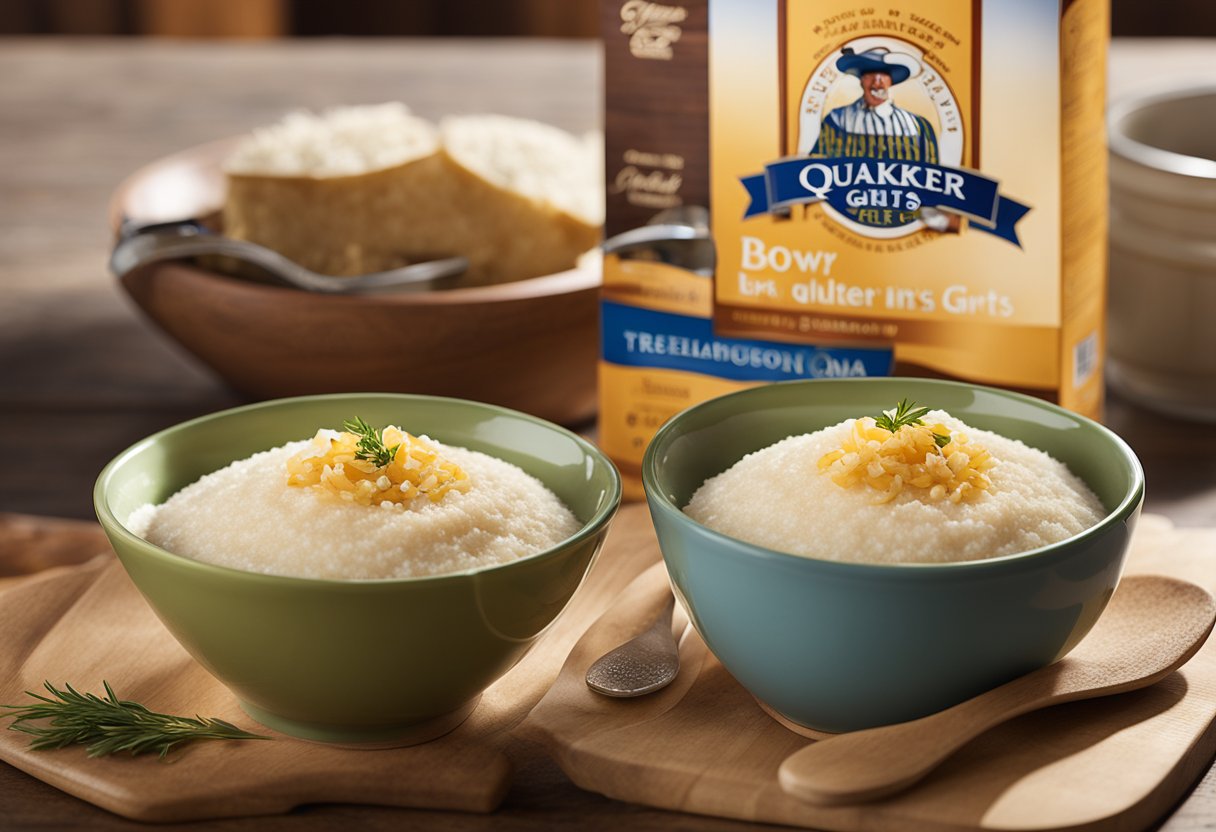
When it comes to grits, there are two main types: instant and traditional. Instant grits are pre-cooked and dried, while traditional grits are made from whole grains of corn that are ground into a coarse meal.
One of the main differences between instant and traditional grits is the texture. Instant grits tend to be smoother and finer, while traditional grits have a coarser texture.
This is because instant grits are made from ground hominy, which is a type of corn that has had the hull and germ removed. Traditional grits, on the other hand, are made from whole grain corn, which includes the hull and germ.
Another difference between instant and traditional grits is the cooking time. Instant grits are designed to cook quickly and can be ready in just a few minutes.
Traditional grits, on the other hand, require a longer cooking time and need to be simmered for at least 20-30 minutes to achieve a creamy texture.
When it comes to gluten-free options, both instant and traditional grits can be gluten-free as long as they are made from 100% corn and are not cross-contaminated during processing.
However, it’s important to note that some brands of instant grits may contain gluten as a result of cross-contamination during processing. It’s always a good idea to check the ingredient label and contact the manufacturer if you have any concerns about gluten content.
In summary, both instant and traditional grits can be gluten-free, but it’s important to check the ingredient label and cooking instructions to ensure that they are made from 100% corn and are not cross-contaminated during processing.
Quaker Grits in Meals
As someone who follows a gluten-free diet, I often turn to Quaker Grits as a versatile and satisfying ingredient in my meals. Here are some ways I incorporate Quaker Grits into my meals:
Breakfast
Quaker Grits make a great gluten-free breakfast option. I love to cook up a batch of grits and pair them with eggs and bacon for a hearty breakfast. For a sweeter option, I add a drizzle of honey and some fresh fruit on top.
Dinner
Quaker Grits also make a great side dish for dinner. They pair well with fish, chicken, or pork. I like to add some cheese and butter to my grits for extra flavor.
Grits Recipe
One of my favorite grits recipes is shrimp and grits. I sauté some shrimp with garlic and onions and serve it over a bed of creamy Quaker Grits. It’s a delicious and filling meal.
Side Dish
Quaker Grits can also be a great side dish for any meal. I like to serve them with roasted vegetables or a salad for a balanced and satisfying meal.
Butter and Cheese
Adding butter and cheese to Quaker Grits is a great way to enhance the flavor. I recommend using a high-quality butter and a sharp cheddar cheese for the best results.
Rice
If you’re looking for a gluten-free alternative to rice, Quaker Grits can be a great option. They have a similar texture and can be used in many of the same dishes.
Overall, Quaker Grits are a versatile and delicious gluten-free ingredient that can be used in a variety of meals. Whether you’re looking for a hearty breakfast or a satisfying side dish, Quaker Grits are a great option.
Additional Information
As someone who has been on a gluten-free diet for several years, I understand the importance of finding safe and reliable gluten-free products.
When it comes to Quaker Instant Grits, it’s important to note that the company cannot guarantee that their product is gluten-free due to the risk of cross-contamination during shipping.
If you are looking for a guaranteed gluten-free option, there are several other brands available on the market. Bob’s Red Mill offers a gluten-free corn grits product that is certified gluten-free and made in a dedicated gluten-free facility.
It’s also worth noting that grits themselves are naturally gluten-free as they are made from corn. However, it’s important to check the labels and ensure that the product has not come into contact with gluten-containing grains during processing.
For those looking for recipe ideas, there are plenty of gluten-free grits recipes available online. From creamy and smooth grits to savory dishes like shrimp and grits, there are plenty of options to choose from.
If you have any questions or concerns about Quaker Instant Grits or any other gluten-free products, it’s always a good idea to consult with a health professional. They can provide accurate information and advice based on your individual needs and dietary restrictions.
Finally, it’s worth mentioning that grits are a staple in traditional American Southern cuisine. They are a great source of thiamin and magnesium and are low in fat. The alkali process used to make grits also increases their nutritional value.
Quaker Oats offers a variety of grits flavors and even offers sweepstakes and special offers through their website and email updates.
Frequently Asked Questions
Are Quaker grits safe for people with gluten intolerance?
Quaker grits are not certified gluten-free, and the company does not guarantee that their products are free from cross-contamination.
However, some people with gluten intolerance or sensitivity may be able to tolerate Quaker grits without issue. It’s important to consult with a doctor or registered dietitian to determine if Quaker grits are safe for you.
What are some gluten-free grits brands?
There are several gluten-free grits brands available, including Bob’s Red Mill, Palmetto Farms, and Anson Mills.
It’s important to always check the label and look for a gluten-free certification or statement from the manufacturer to ensure that the product is safe for those with gluten intolerance or celiac disease.
Can people with celiac disease eat grits?
People with celiac disease should only consume grits that are certified gluten-free to avoid the risk of cross-contamination. It’s important to always read labels carefully and look for a gluten-free certification or statement from the manufacturer.
Are there any gluten-free instant grits available?
Yes, there are several brands of gluten-free instant grits available, including Bob’s Red Mill and Palmetto Farms.
It’s important to always check the label and look for a gluten-free certification or statement from the manufacturer to ensure that the product is safe for those with gluten intolerance or celiac disease.
What are the ingredients in Quaker Instant grits?
The ingredients in Quaker Instant grits vary depending on the flavor, but they typically include enriched white hominy grits (degerminated white corn grits), salt, and various flavorings.
It’s important to always check the label for a complete list of ingredients and potential allergens.
Are grits generally considered gluten-free?
Grits are made from corn, which is a naturally gluten-free grain. However, some grits may be processed in facilities that also process wheat, barley, or rye, which can lead to cross-contamination.
It’s important to always check the label and look for a gluten-free certification or statement from the manufacturer to ensure that the product is safe for those with gluten intolerance or celiac disease.







